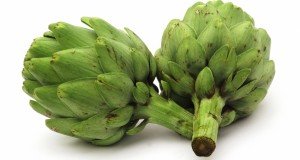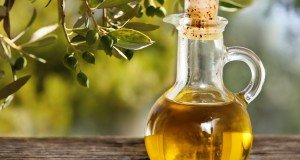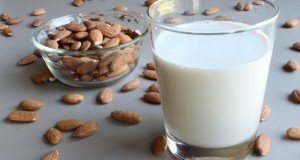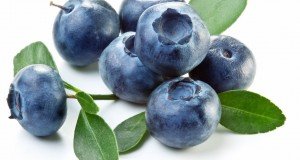Milk thistle combats liver disease and offers blood sugar control
(Naturalhealth365) With the exception of its showy purple blossoms, milk thistle has the thorny, scrubby appearance of a common roadside weed. Yet, this humble-looking plant offers a wide range of benefits that are powerful enough to help address many of the health concerns including, liver problems and blood sugar imbalances.
Botanically known as Silybum marianum – and sometimes referred to as Scotch thistle – milk thistle has been revered by natural healers and herbalists for over 2,000 years as a great way to help detoxify the liver.
On top of that: traditional scientific research shows that milk thistle extracts can help to prevent many health issues that have inflammatory or autoimmune-related components, including type 2 diabetes.
The important connection between milk thistle and nonalcoholic fatty liver disease
Nonalcoholic fatty liver disease (NAFLD), the most common type of liver disease in the country, is reaching epidemic proportions in the United States – as well as worldwide. In fact, some experts estimate that the ailment affects up to 45 percent of the population in industrialized North America and Europe.
Although the disease can be quite mild, severe cases can carry grave consequences – including liver cancer, cirrhosis and liver failure. By the way, you should know that metabolic syndrome – associated with excess consumption of sugars and fats, obesity and a sedentary lifestyle – is a leading cause of NAFLD.
Silymarin, a bioflavonoid found in milk thistle, can repair and restore liver cells – slowing the progression of NAFLD and preventing it from turning into steatohepatitis, a more dangerous form of the condition.
Research has supported the ability of milk thistle extracts to alleviate liver disease in both animals and humans. In one particularly encouraging study involving 85 outpatients with NAFLD, silybin – a constituent of silymarin – lowered liver enzymes, decreased insulin resistance, reduced amounts of fat in the liver and decreased liver scarring.
It’s official: Silymarin has a positive effect on blood sugar levels
In addition to other consequences, NAFLD can trigger insulin resistance – which in turn can set the stage for type 2 diabetes.
Silymarin’s strong antioxidant qualities allow it to reduce oxidative stress and promote optimal liver function – which fights insulin resistance by helping to ensure healthy glucose metabolism and blood sugar levels.
In addition, silymarin’s natural antioxidant and anti-inflammatory properties also help to prevent damage to the pancreas, nerves and kidney, alleviating complications of diabetes such as kidney damage (diabetic nephropathy).
And, silymarin has yet another trick up its sleeve when it comes to combating diabetes. Studies have shown that this versatile bioflavonoid protects the insulin-producing beta-cells in the pancreas.
Finally, silymarin can decrease levels of inflammatory proteins and reduce scarring in the liver.
Study reveals: Silymarin works to improve blood sugar levels
In a randomized double-blind study published in Phythotherapy Research, participants were divided into two groups. One group received 200 mg of silymarin three times a day for four months, while the other group was given a placebo. All participants continued to take their pharmaceutical blood sugar-lowering medications.
Researchers found that silymarin substantially lowered levels of both blood glucose and glycosylated hemoglobin, which reflects glucose control over the long run.
The team reported that average fasting blood sugar levels in the silymarin group dropped from 156 mg/dL to 133 mg/dL – a significant decrease. The control group did not fare as well.
In spite of receiving standard pharmaceutical medications, this group experienced an average increase of 11 mg/dL.
When compared to their own basal (pre-study) levels and to the control group, the silymarin group had significant reductions in total cholesterol, LDL cholesterol, triglycerides (or fats) in the blood and liver enzymes.
The researchers deemed the results “very encouraging,” and noted that silymarin could play an important role in treating type 2 diabetes.
The effect of milk thistle on cancer cells and the brain
Although more research is needed, milk thistle appears to have a protective effect against cancer, particularly cancers of the breast, prostate and ovaries. It can also help alleviate the unwanted side effects from chemotherapy.
Other research shows that milk thistle can build bone and help protect against osteoporosis. And, its potent antioxidant capabilities help to discourage the formation of beta-amyloid plaques associated with Alzheimer’s disease.
Milk thistle also benefits Crohn’s disease, ulcerative colitis and other inflammatory gastrointestinal conditions.
Long advised by natural healers to help cleanse and detoxify the liver, milk thistle has been shown to protect the liver from damage caused by antibiotics, heavy metals, NSAIDS and alcohol.
Obviously, for anyone taking prescription or over-the-counter medications – or drinking alcoholic beverages – milk thistle supplementation can be a wise move.
Look for a milk thistle extract standardized to 70 to 80 percent silymarin. Integrative healthcare providers typically recommend dosages of 100 to 200 mg, taken twice daily with meals.
Milk thistle is generally recognized as safe, non-toxic and well tolerated. But, having said that, it’s best to check with your doctor to determine the proper dosage for your needs.
Getting rid of NAFLD, working against diabetes and helping to neutralize the negative effects of toxins are all in a day’s work for milk thistle. Ongoing studies will likely reveal even more therapeutic effects from this humble herb – proving that health benefits can appear in the most unglamorous of packages.
Editor’s note: Find out how to naturally support healthy liver function. Click here to learn more.
Sources for this article include:
UniversityHeatlhNews.com
MilkThistle.com
LifeExtension.com
Cidpneuropathysupport.com
NIH.gov
NIH.gov











